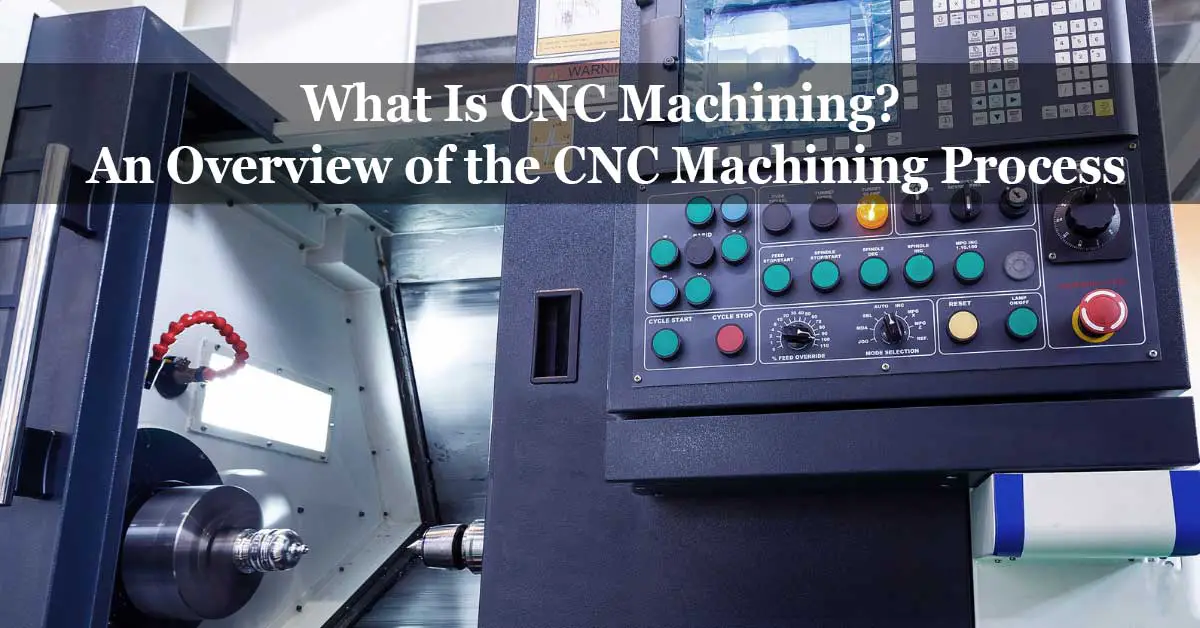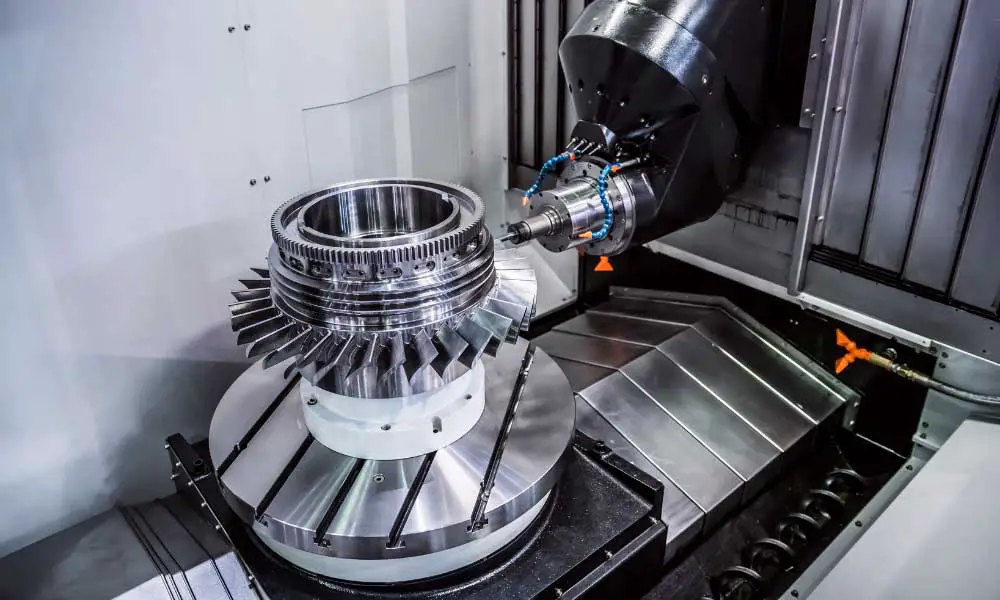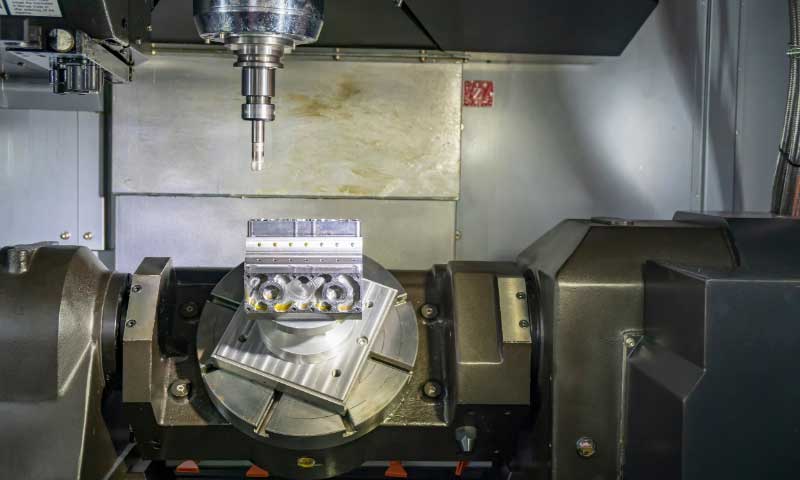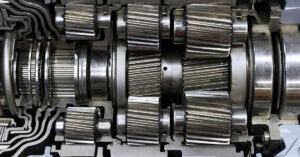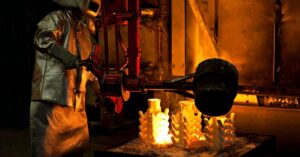Do you want to make a career in CNC machining? It is a fact that new technology and IT growth has brought about a revolution in the machining process and engineering. CNC or computer numeral control is an innovation. In CNC machining, a software program controls the movement of machinery and rotating elements. You may perform sophisticated machine tasks with CNC machining, you may own grinders, lathes, and cutters at the same machine.
What is CNC or Computer Numeral Control?
The computer numerical control is an automated system to run the machining process. Obviously, it is more efficient and faster than manual controls. It may perform machining tasks, including cutting, welding, grinding, and stamping, with more precision. It has the upper hand over the manual machining process and removes its limitations. There are no live operators in the CNC process to prompt and guide tools such as levers, buttons, and wheels. CNC system is like an arrangement of computer components. But its functionality is quite in contrast with other computation varieties. It has special software programs and consoles that are employed for effect and performance.
History of CNC machines
The history of numerical machines begins with the introduction of motors in 1940. The motors were used to replicate the pre-existing machine tools. With the development of technology and the introduction of computers, the mechanism became more advanced. The analog computers were used for this purpose. Now all the process is controlled by digital computers. All these innovations led it to CNC machine tools.
The US air force first used the CNC machining tools in the early 40s. The CNC machine tools took a boost and were applied in almost all industries. Due to ultra-precise results, its usage grew, and today we cannot think of a manufacturing process without a CNC implementation.
Today, we have electronic CNC devices that may work on different mechanical systems. There are different variations, types, and forms of CNC machines that can perform sophisticated processes such as ultrasonic welding and laser cutting.
Why CNC machines
In today’s industrial environment, the manufacturing process relies on CNC machining tools. The different operations are performed through an automated process, and CNC machines operate various types of equipment. The manufactures have replaced the operator’s required equipment with CNC machining tools. Using CNC tools, it is possible to produce suitable and precise industrial products more accurately.
CNC machining tools have given us financial and manufacturing advantages over traditional machining. It would help if you had a skilled professional for each machine in conventional ways, but CNC machines have made it possible to operate several machines with only one technician. In a conventional machine shop, for example, there must be a skilled technician for every machine, while with CNC machining, one professional person can operate several machines.
In the manufacturing industry, CNC machining produces many metal and plastic products for use in different sectors. There are a lot of industries that use CNC machines for accurate, consistent, and precise cuts. Here is an overview of the industries that use CNC machining tools:
- Aerospace and transportation industry.
- Agriculture sector.
- Dental and hospitality.
- Electronics and publishing.
- Construction and manufacturing.
- Metalwork and production.
- Military and sea navigation industries.
A comparison between CNC and conventional machining
CNC machining has the upper hand indeed over the conventional method, but both have the same objective. Both aim to cut a raw metal or plastic into different pieces and shape and turn it into a finished product. The difference is the automation of the CNC machine and the manual method of traditional methods. There are some critical advantages of CNC machining that include:
- Speed.
- Production rate.
- Precision and accuracy.
In CNC machining, a programmer implements software to cut the parts of a product. Simultaneously, in conventional methods, a professional worker works on a machine to cut the piece of metal. The operator needs to use all tools, including gears, and in CNC machining tools, no gears are used.
We may use the conventional methods to save the bucks and for small quantity projects. If you need to go for larger quantities, CNC machining is the best choice. The traditional machines need different tools that are also used in CNC machines.
CNC machining is used in both conventional and contemporary developed tools for different industrial jobs that involve other materials such as:
- Aluminum and brass.
- Copper and steel.
- Foam and polypropylene.
- Titanium and plastic.
- Wood and fiberglass.
CNC machines application
CNC machines are used for different types of tasks and ventures. Here are some cutting chores that are processed by using CNC tools:
- Bore and contours.
- Cuts and drills.
- Engraving and grinding.
- Groove and punch.
- Lathe and milling.
- Welding.
- Shaping and stamping.
- Injection molding.
Advantages of CNC machines
If you are related to planning the manufacturing process and deal with different metals and other components, you would be interested in knowing the benefits of using CNC machining tools. Though various businesses deal with CNC machining, there are varied uses of CNC machines. Here are some critical advantages of CNC machines.
- Elimination of errors: Precision components are essential for the modern manufacturing process. The manufacturers use the digital template and autonomous machining of CNC to avoid mistakes and errors and achieve accuracy with utmost correction.
- Reliability and endurance: The CNC machining tools outperform conventional methods. These machines work without any break around the clock. You may need to carry on the manufacturing process during weekends and holidays, these machines are working automatically, and you may only stop them for repairs.
- High quantity production: After the design parameters are installed, and specifications are programmed into a CNC machine, we may expect a more considerable production speed. The device executes the process fast and with flexible scalability.
- Enhanced capacity: CNC machines create the pieces of products that the manual machines cannot produce, the CNC machines come with advanced and unique design software, and no one can replicate it. The skilled engineers cannot do with the most advanced machines that the CNC machines with innovative programs can do. You can get products of any size, texture, and design with CNC machining tools.
- More productivity with lesser labour: For the execution of production tasks, fewer workers need to perform the process with CNC machine tools. You may run several automatic machines with only one worker, and a skilled programmer may upload a variety of designs in a machine. With manual machines, a professional operator is needed to be employed for each device. And overall, a supervisor is also required to lead the workers. With lesser human resources, you can produce a larger quality of products in the budget.
- Uniformity: Concerning output, the CNC machines have the upper hand over conventional devices. The traditional machines cannot give you a uniform production. There will be slight variation though you have employed the most skilled operators. With the CNC machines, the output is uniform and precisely matches the product’s prototype with exact specifications.
- Affordability: The fast product of the larger quality of products and precision and lower labour induction will make the finished products more efficient and inexpensive. The costs are lowered, and you have a competitive advantage. CNC machines may save you precious money, and you may invest in other sectors to produce quality products.
- Safety and security: The manufacturing environment is safe due to the reasonable production process and workpieces’ consistency. The operators working on CNC machines are at a safe distance from sharp tools. Direct contact with lathes, drills, and punches is the feature of conventional machining, and there is the possibility of untoward incidents.
- Retrieval of design: When a programmer has coded the design and loaded it to the CNC machine, a perfect product prototype exists. Whenever you want, you may retrieve the design and create the things you want. The CNC machine will produce the exact model every time you operate it if the operators do not alter the disk. The Master file keeps the design in original.
CNC machining process
But how does the CNC machining process work? When you activate the CNC system and make it functional. The cuts you required are integrated into the software, and the related tools and machinery work according to these instructions. The machinery performs the desired tasks like a robot.
There is a code generation system in CNC programming. The numeral system works on flawless machines. There may be errors. There may be directions in the machine to cut more than one dimension at a time. There are part programs in the system that outlines the series of inputs. The same is the numeral control system in CNC programming.
You may integrate the programs through punch cards when you work on the numeral control machine. In the CNC system, you may feed the programs into the computer through a keyboard. The CNC programmers write and edit the codes.
There is more significant and vast computational power in CNC software. It is not a static process. You may add new instructions and revise the code for functions.
CNC machine programming methods
The numerical control is the primary operating unit of the CNC machine. An especially design system performs a task. CNC programming language is termed as G-code. The written code controls the functions of an individual device.
These functions may include speed, feed rate, and connectivity. You may program the speed and position of a tool. The machine runs in a reprieve and predictable manner. The involvement of human operators is minimal.
There are different methods for programming in CNC machines, such as:
1. Manual programming
Manual programming is a tedious process. The programmers manually inset commands and codes in the CNC machine. The programmer must understand the manual methods and techniques for this purpose. Here are some features of manual programming:
- It is like arithmetic calculations.
- For fewer machine tools, manual programming is the best choice.
- If machining jobs are limited, the businesses prefer manual programming.
- The verification of the program is simple, and you may correct the coding mistakes.
2. Conversational programming
Conversational programming is increased in recent years. In this method, you may create a program at a CNC machine. It involves the use of graphic and menu-driven functions. You may check various parts. Here are some necessary specifications of conversational programming:
- This programming method has variations from one manufacturer to another.
- It is the best option for a single-purpose CAM system.
Machining systems: Open and closed-loop
You may determine the position control through open-loop and closed-loop systems. In an open loop, there is a single direction of signal that goes from controller to motor. If you have a closed-loop system, it can get feedback and make it possible to correct the errors. You may make corrections and eliminate mistakes if they occur.
Besides, you may guide and position the tool using stepper and servo motors. G-code replicates the exact exercise. In case of minimal force and speed, we may use an open-loop control system to run the process. For other things else, it is essential to use closed-loop control. It includes speed, consistent operation, and accuracy as required for industry-based applications, such as metalwork.
Outcomes of faulty machine coding
It should be kept in mind that the CNC machining process is not free of errors, and there may be some complications. There may be a chance that the workpiece or machine may be instructed in the wrong direction. There may be a crash when it happens. As a result of such a mishap, the tool or machine parts are broken. There are different reasons and factors for these phenomena. The breakage may include a minor cut or screw breakage and also lead to severe destruction of structures.
The CNC machine tools don’t have detailed insight into the distance. These tools cannot sensor longer distances, so you need to program these tools in the right manner to become error-free. If you do not calculate the code rightly, you cannot expect actual performance. The misplacement of the CNC machine may result in internal faults and collusions. It is a fact that most CNC machines are built within pre-calculated parameters, and the operators can manipulate the outputs.
Moreover, CNC tools are not sensitive to the given industrial environment. There are specific CNC machines that are installed with spindle load sensing. Some do not come with these features; in such cases, you must adequately program the software with the right codes to ensure that the machine remains within pre-calculated boundaries. If these things are not followed, the result will be a collision. There may be such faults even if the device is programmed rightly. If there is an individual situation, only operators can rectify the functions and code it right.
How to prevent crashes in CNC machines
If you install the encoder disk position sensors, you may determine the possibility of a collision before such a thing occurs and take measures to avoid this. Moreover, you may install torque sensors and get insight into the CNC machine’s functionality and detect if there is an unwanted cutting going on.
In CNC machine systems like a garage, most cutting tools depend on stepper motors’ rotation precision to determine the right degrees. If you want to check the tool position rightly, we must count the pulses that go to steppers. In such cases, you cannot go for alternative monitoring.
In the case of industrial CNC machines, you may place the closed-loop controls. These control systems understand the axis position. If you control it properly, you may avoid crashes considerably. It is up to programmers to check they have programmed it rightly to ensure safe and secure functionality,
There has been a development during the last 20 years, and new innovative tools are applied in CNC machines. These advanced machine tools include:
- Axes
- Clamps
- Fixtures
- Spindles
- Turrets
Besides, we can ensure the precision of 3D models. Now the specifications of these tools are programmed in codes. We may determine that if there is a possibility of a crash during machining.
An automated process of CNC machining
The prominent feature of CNC protocols is automation. The parts are produced through already installed program software. The computer-based CAD software sets the dimensions of a specific position. The CNC system transforms it into a finished product using CAM software.
There may be different machine tools that the workpiece needs. These machine tools include drills, cutters, and much more. The machines today are complex and perform a variety of tasks. Different functions are integrated into one machine to meet the needs. Otherwise, you will have installed various machine tools; you will need robotic hands to transfer these parts from one application to another. The same program controls all these variations. The CNC system facilitates all the processes of different functions.
Different types of CNC machines
Here is an overview of the most frequently used CNC machines:
CNC mills: The CNC mills commonly run on number and letter-based systems. These prompts instruct the pieces from different distances. The manufacturing teams may develop other unique coding languages or use G-code for programming purposes. There are three-axis systems used in the necessary type of CNC mills.
CNC lathes: If you want to cut the pieces in circular forms, you may use lathes. These tools work with indexable systems. With CNC technology, you may carry out the cutting process with utmost precision and high speed. We may use CNC lathes to develop intricate designs that we cannot do manually to operate different machine versions. The lathes and CNC run miles have some standard functions to direct the lathes with G-code or programmer developed code. Most lathes have only two axes: X and Y.
Plasma Cutting: We use a plasma torch to cut the material. We can cut metals and other materials and surfaces. We combine compressed air gas and electrical arcs to generate plasma. It provides better speed and heat that is essential for cutting some characters.
EDM or electric discharge machine: It is also termed as die sinking or sparks machining. With this process’s help, we may mold the material and give it the required shapes using electrical sparks. The two electrodes are the center of electric discharge. With it, you may remove some parts of the workpiece. With the reduction of space between the electrodes, the electric field’s intensity increases, becoming more powerful and robust. In this way, the current between two electrodes passes without any restriction or resistance. As a result, the parts of the material are removed.
Water jet cutting: We may cut hard material using water jet tools in CNC machining. The material may include granite and metal. The water is applied with hard pressure to remove hard materials. We may combine sand or some other abrasive substance. Different industries use this process to cut the material and shape it into a newly finished part.
Conclusion
It is a fact that CNC machining has become an integral part of the manufacturing sector. Now, these programmed tools perform essential and critical functions. Different modern machining parts are manufactured with the help of CNC matching tools. We produce computer parts and aerospace components faster and easier with the implementation of CNC tools.
Different machine firms specifically make custom machines and fabrication for industrial use. The CNC specialist services have in-house professionals to develop the programs to cater to the needs of different industries.
References:

